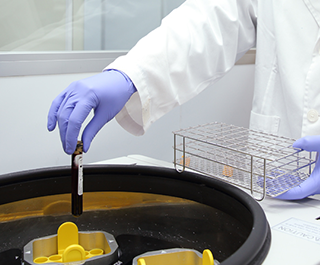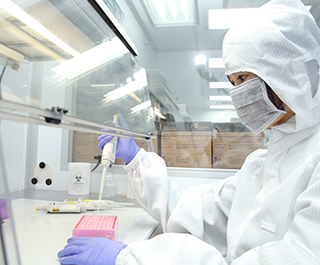What is SMA?
Spinal muscular atrophy (SMA) is a potentially lethal genetic disease, and the -onset of SMA may occur at all ages, from birth to adulthood. At disease -onset, the muscles of a SMA patient would develop symmetry, gradual degeneration and atrophic manifestation of weakness with the patient’s ability to control voluntary muscle movement, such as walking, crawling, swallowing, breathing, and controlling head/neck muscles, becoming increasingly affected.
Presently, SMA is understood to be occurring primarily as a result of genetic mutations. Its gene, known as the SMN1 gene, is located in the region on the long arm of chromosome 5. About 95% of SMA patients have the disease as results of the deletion or conversion of a large section in the segment of the SMN1 gene, and the small number of patients who does not have a SMN1 gene deleted or converted of a large section possibly suffers the disease due to some minor mutations. The majority of normal persons have more than 2 SMN1 genes with only one SMN1 gene for carriers and none for persons with SMA.
SMA Genetic Testing
| Testing Method |
Testing Time |
Note |
|
2-3c.c of whole blood is collected by ordinary blood drawing and is placed in the purple-capped EDTA blood collection tube. We will extract DNA from this blood sample, carrying out the genetic test directly. |
The result can be known in 2-3 weeks. |
Because this test is a newly developed technique, it is not covered by the NHI. Like the Down syndrome screen, one still needs to pay for it currently. If in need of the service, you are welcome to consult your OB/GYN |
Persons who have underwent this genetic testing can just return to their original doctors to view their reports in 2-3 weeks' time following their blood collection.
Based on our most advanced genetic testing technique to date, we can quickly and accurately screen out a carrier (a 95%-better accuracy). To reduce the incidence of SMA, in our approach for this genetic testing, we will proceed similarly to the prenatal screening model for thalassemia if both parents are confirmed to be carriers following genetic tests.
Since SMA can't be diagnosed by prenatal ultrasound, the next thing to do is to obtain the relevant fetal sample for direct DNA analysis. The invasive examination that is carried out usually includes chorionic villus sampling (CVS), amniocentesis or fetal cord blood drawing. Through this screening process, we hope to reduce the incidence of SMA in Taiwan, subsequently lowering the burdens on families.







